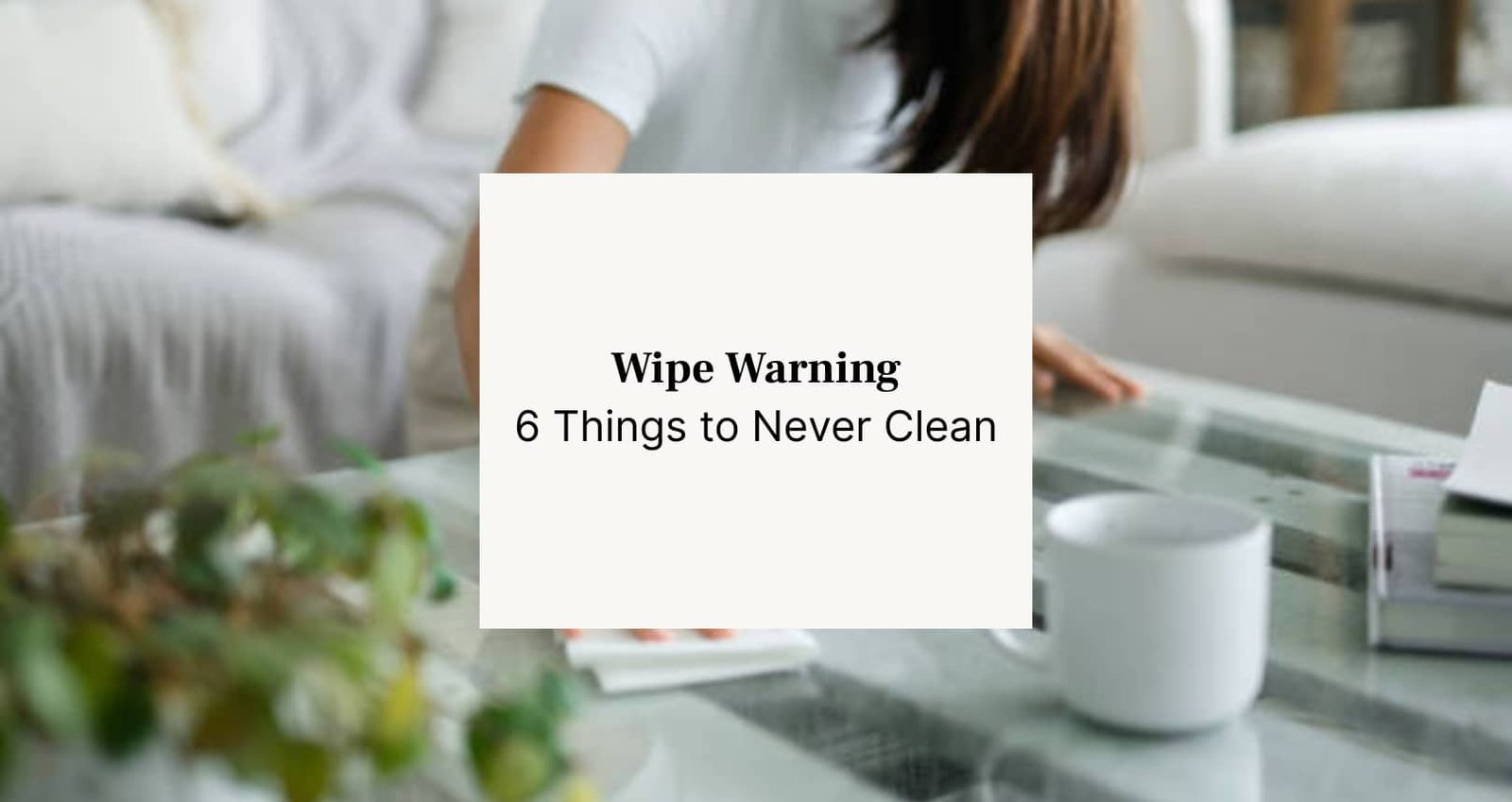Discover the 6 items in your home that you should never clean with disinfecting wipes so that you do not damage anything.
Discover the 6 items in your home that you should never clean with disinfecting wipes so that you do not damage anything.

Disinfecting wipes are common in most households because of their convenience and ability to eliminate germs. Nevertheless, they do not suit all kinds of surfaces. Their unconscious use may result in destroyed finishes, malfunctioning electronics, and even injuries to your close ones. This is a rundown of six items you should not clean using disinfecting wipes and why you should not use them.
Another thing to bear in mind is that disinfecting wipes are not created to infiltrate into porous surfaces. Misuse makes them ineffective at killing germs and leaves a sticky residue that attracts more dirt. Excessive use may make finishes appear dull, protective finishes less strong, and, in some cases, even cause allergies because of high chemical fragrances. Next time before you grab a wipe, make sure you check how the manufacturer suggests you clean the surfaces; your surfaces will endure a lot longer. Also look for 10 New Uses of Old Belts Throughout Your House.
It might appear to be nothing wrong to wipe down your leather couch or handbag using disinfection wipes, which, however, do irreversible damage. The natural oils in leather are removed due to the alcohol and severe chemicals found in the wipes, making it dry, cracked, and faded. Leather cannot tolerate disinfecting wipes when you need to preserve its feel and durability. Rather use a leather-safe cleaner or a damp cloth and then leather conditioner.
Fingerprints and smudges attract tablets, laptops, smartphones, and televisions. Do not use wipes on electronics, particularly the touchscreens, which can be easily damaged by the wipes. The wetness could leak through any holes, creating damage inside, and the chemicals could cause a corrosive effect on the protective covering. Use screen-safe microfiber cloths, and add a pinch of isopropyl alcohol when required.
Vinyl is usually used in car seats and dining chairs and in certain sofas. The bad news, however, is that vinyl furniture is destroyed by wipes used to disinfect over time, as these destroy the surface of the material. The result? Fractures, delamination, and sheen loss. Rather, these surfaces can be cleaned by cold water, mild soap, and a soft sponge.
It is also important to clean the bowls of your pet; however, we should not count on the strong chemical solutions. Animals can be poisoned if they ingest the residue left behind by the disinfecting wipes. And why not disinfecting wipes on pet food bowls? Any residual chemical residue could potentially disrupt your pet’s digestive system or worse. Wash in hot soapy water or put stainless steel and ceramic bowls into the dishwasher.
Disinfecting wipes can kill germs, but they do not make food safe. Wood is also porous, and this implies that the chemicals can be absorbed into the board. This is a danger of food contamination during preparation. Rather, cleaning of cutting boards should be done by sanitizing them with vinegar, baking soda, or diluted bleach, as appropriate.
The disinfecting wipes do not suit soft materials such as cushions, curtains, or mattresses. The fluid might stain, leave marks, and even form mold in the cloth fibers. More to that, they do not clean porous surfaces adequately. Instead, use fabric-safe sprays or use steam cleaners on these areas.
Wipes are convenient; however, that fact does not imply that they can be used anywhere in cleaning. Disinfecting wipes must never be used on porous, delicate, or food and pet contact surfaces. Knowing the specific areas where you should not use them may save your property and even your health.
You can keep your family and pets safe by avoiding disinfectant wipes on items they shouldn’t be used on.